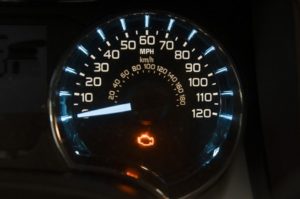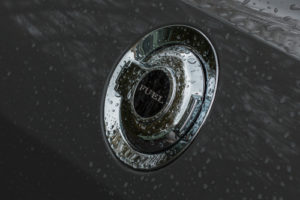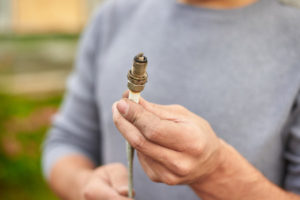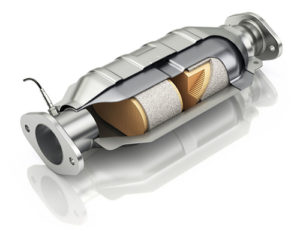 Your check engine light may seem like an ominous sign that something terrible is about to happen to your car, but don’t panic – it’s not always the case. The check engine light comes on when your vehicle’s computer detects a problem with the emissions system. Since the problem may be significant or small, let’s help you get to the bottom of the cause with the top reasons your check engine light is on.
Your check engine light may seem like an ominous sign that something terrible is about to happen to your car, but don’t panic – it’s not always the case. The check engine light comes on when your vehicle’s computer detects a problem with the emissions system. Since the problem may be significant or small, let’s help you get to the bottom of the cause with the top reasons your check engine light is on.
1. Your gas cap is loose, worn, or missing
 Your gas cap may be a small part, but it does a big job in keeping fuel and gas fumes inside your gas tank while keeping dirt and road debris out. This is the simplest reason your check engine light is on, and it’s also quite easy to fix.
Your gas cap may be a small part, but it does a big job in keeping fuel and gas fumes inside your gas tank while keeping dirt and road debris out. This is the simplest reason your check engine light is on, and it’s also quite easy to fix.
First, you’ll want to tighten the gas cap to make sure it’s secure. If your check engine light doesn’t turn off, then you’ll need to get a new one. Similarly, if your gas cap is missing, it’s time to get a new one. Your local auto supply store will have a replacement part.
2. Your oxygen sensor is bad
Your oxygen sensor helps regulate the fuel-air mixture that goes into your cylinders by measuring how much oxygen is in your exhaust system.
Depending on the year, make, and model of your car, your vehicle may actually have several oxygen sensors. A fault in any one of them can trigger your check engine light. This problem is easy enough to fix with a replacement oxygen sensor, but make sure you determine which one is faulty first!
3. Your spark plugs and/or ignition coils may be the culprit
 Your spark plugs ignite the fuel and air mixture that enters your engine cylinders. A worn-out spark plug can trigger a check engine light, as can faulty spark plug wires.
Your spark plugs ignite the fuel and air mixture that enters your engine cylinders. A worn-out spark plug can trigger a check engine light, as can faulty spark plug wires.
Your vehicle’s ignition coils are responsible for generating the electricity your spark plugs need to work. Older vehicles may only have one coil, while newer vehicles typically have one coil per spark plug. An issue with a single coil can trigger a check engine light.
4. Your mass airflow sensor is bad
Your mass airflow sensor may sound the same as an oxygen sensor, but it’s actually a different part. This sensor detects air temperature inside your engine, which in turn helps your car’s computer adjust the fuel-air mixture so your car can run efficiently. You will need to have this part replaced if it’s gone bad.
5. Your catalytic converter is failing or faulty
 In short, your catalytic converter takes the harmful gases your engine produces during normal operations and converts them into odorless, less-harmful gases. Although many modern catalytic converters last the life of the vehicle, they can become damaged or wear out prematurely, triggering your check engine light. This problem doesn’t go away on its own and can cause significant repair costs if left unchecked.
In short, your catalytic converter takes the harmful gases your engine produces during normal operations and converts them into odorless, less-harmful gases. Although many modern catalytic converters last the life of the vehicle, they can become damaged or wear out prematurely, triggering your check engine light. This problem doesn’t go away on its own and can cause significant repair costs if left unchecked.
Read more about the signs of a faulty catalytic converter»
6. Your vacuum hose is leaking
Your vacuum hose is part of the EECS (evaporative emission control system), which is designed to prevent gas vapors from escaping. When your vacuum hose is old and/or leaking – you guessed it – this problem can trigger the check engine light. The gasket that connects your vacuum hose to the rest of the EECS can also crack or wear out, likewise triggering the check engine light.
Troubleshoot Your Check Engine Light With T3 Atlanta
If you’re dedicated to getting to the root of the problem yourself, you can always purchase a code diagnostic reader to read what error codes are in your engine’s computer. Alternately, you can visit us at T3 Atlanta for fast answers about this troublesome light. Our service centers are open and honoring social distancing guidelines to protect our guests and our team.










Leave a Reply
You must be logged in to post a comment.